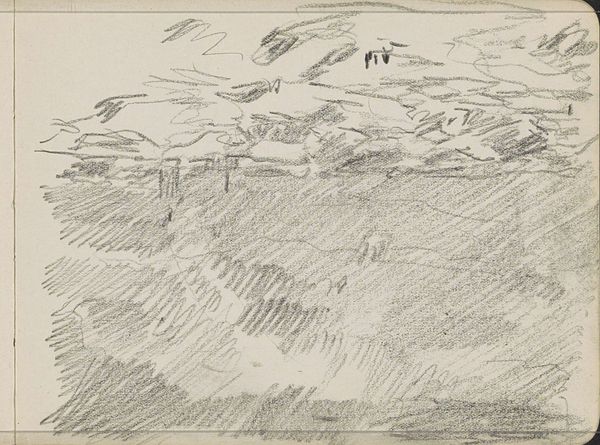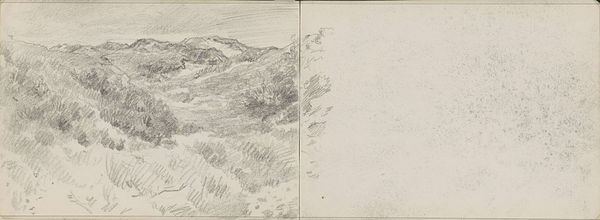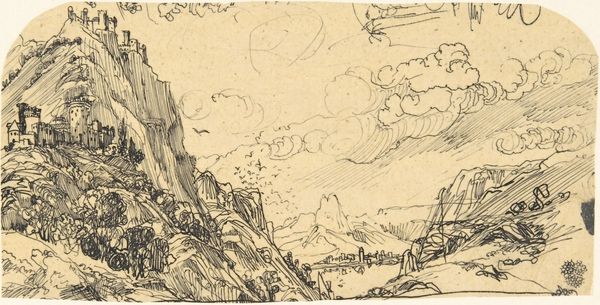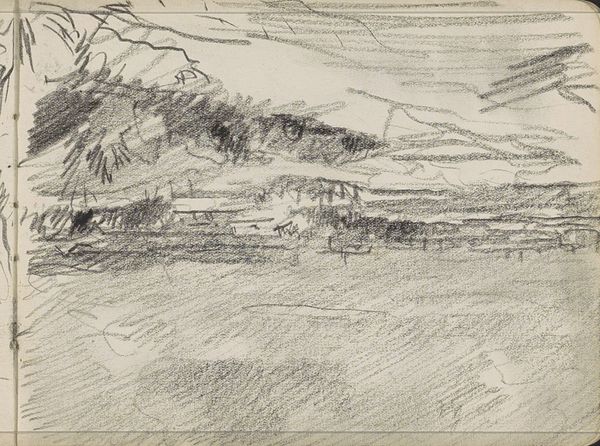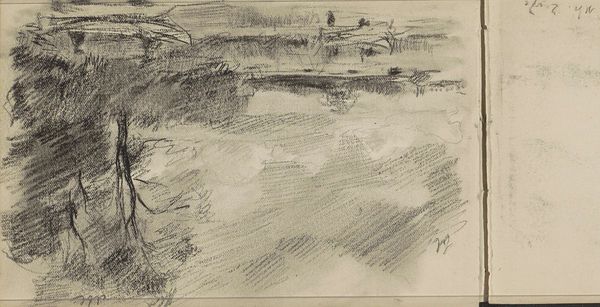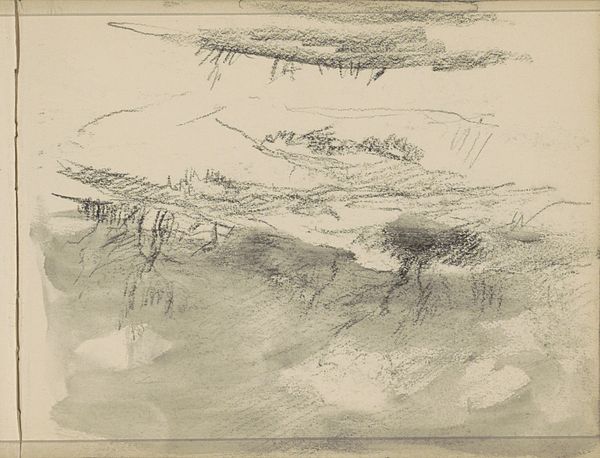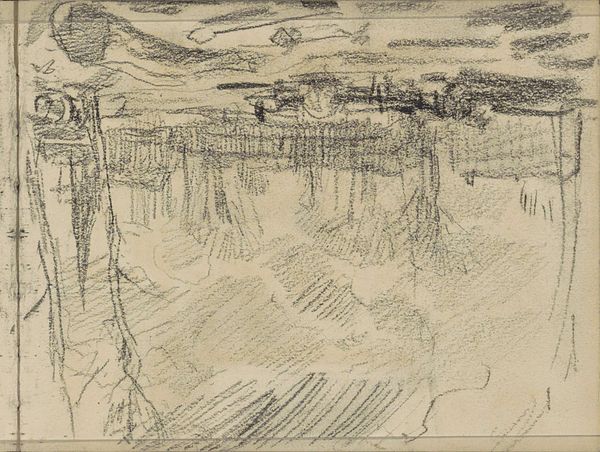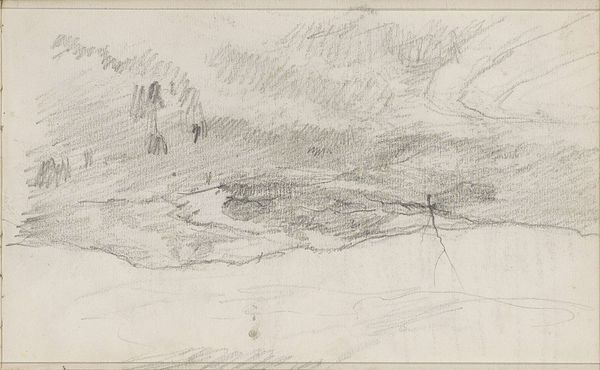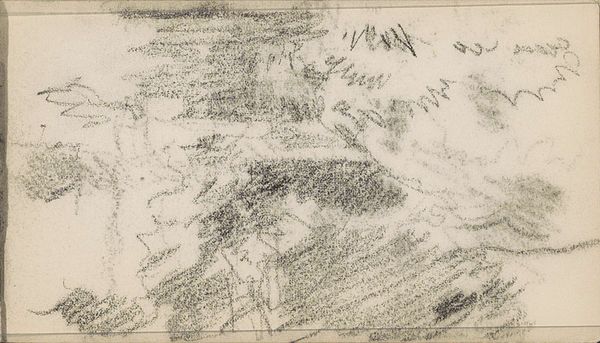
Copyright: Rijks Museum: Open Domain
Editor: We're looking at Johan Antonie de Jonge's "Duinlandschap, mogelijk met de watertoren te Scheveningen," a pencil drawing, likely from sometime between 1884 and 1927. It has a raw, almost fleeting quality to it. The wind seems to blow right off the page. What strikes you about this piece? Curator: Fleeting is right! It's like catching a thought on the wing, isn't it? This isn't about capturing every blade of grass; it's about capturing the *feeling* of the dunes. You can almost smell the salt air. And see that little water tower lurking in the background? It anchors the sketch, gives it a specific place, yet the rest… the rest is pure impression, like a dream half-remembered. Do you feel that De Jonge communicates depth even in such a seemingly simple work? Editor: Definitely. The shading, the way the lines fade in and out…it creates a sense of distance. It's looser than I expected, and very atmospheric, like it captures not just a place but also the weather of the place. Why just use pencil though? Curator: Perhaps that's the charm. Pencil is immediate, personal. Think of it as the artist’s intimate conversation with the landscape, unfiltered, immediate. If this was the genesis of something grander? A moment caught, then set free. What feelings emerge as you linger longer in De Jonge's world? Editor: A sense of calm. Of vastness, too, maybe. Like I’m standing right there, feeling the wind in my face. It is very transportive! Curator: Yes. A little whisper of a memory. See? Sometimes, it's the simplest things that speak the loudest. I like it. A lot. Editor: I agree. There’s beauty in that simplicity, in the suggestion of a scene, leaving space for our imaginations to wander through those dunes.
Comments
No comments
Be the first to comment and join the conversation on the ultimate creative platform.
